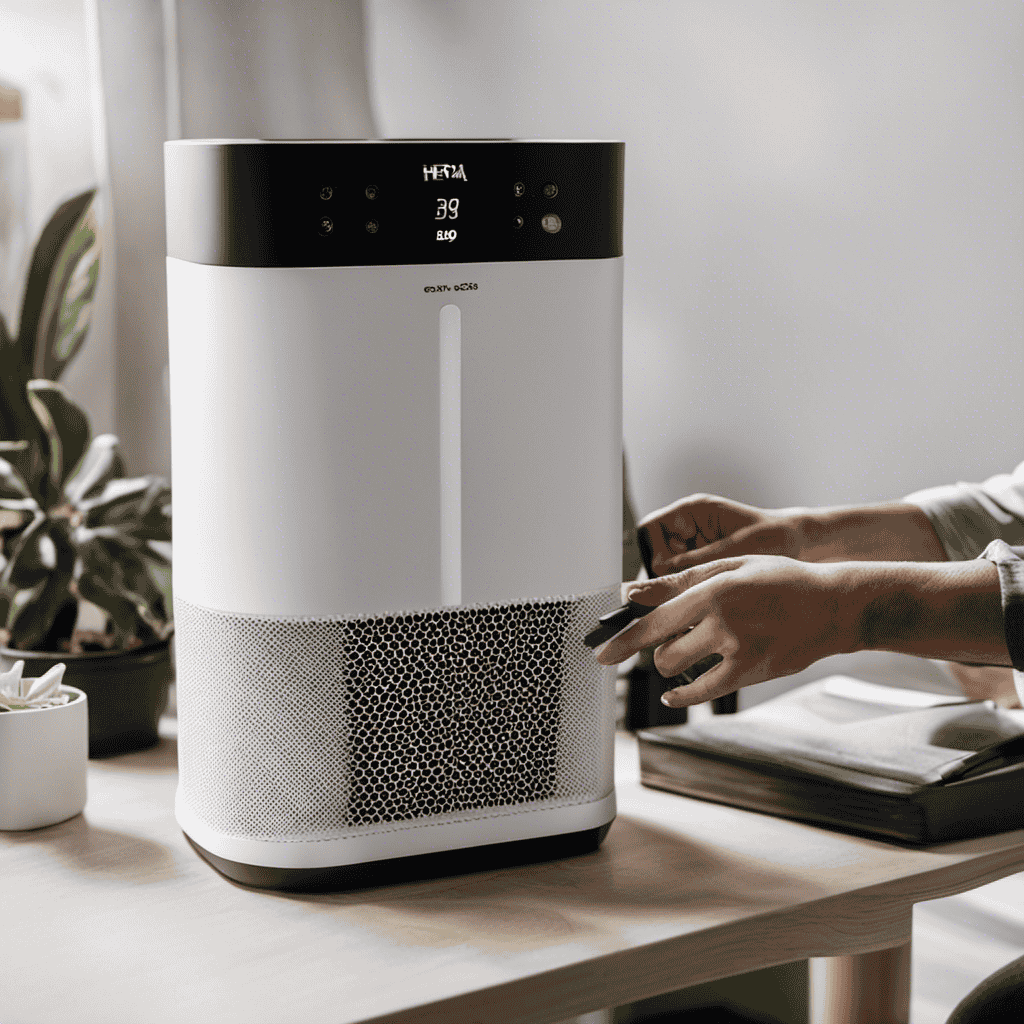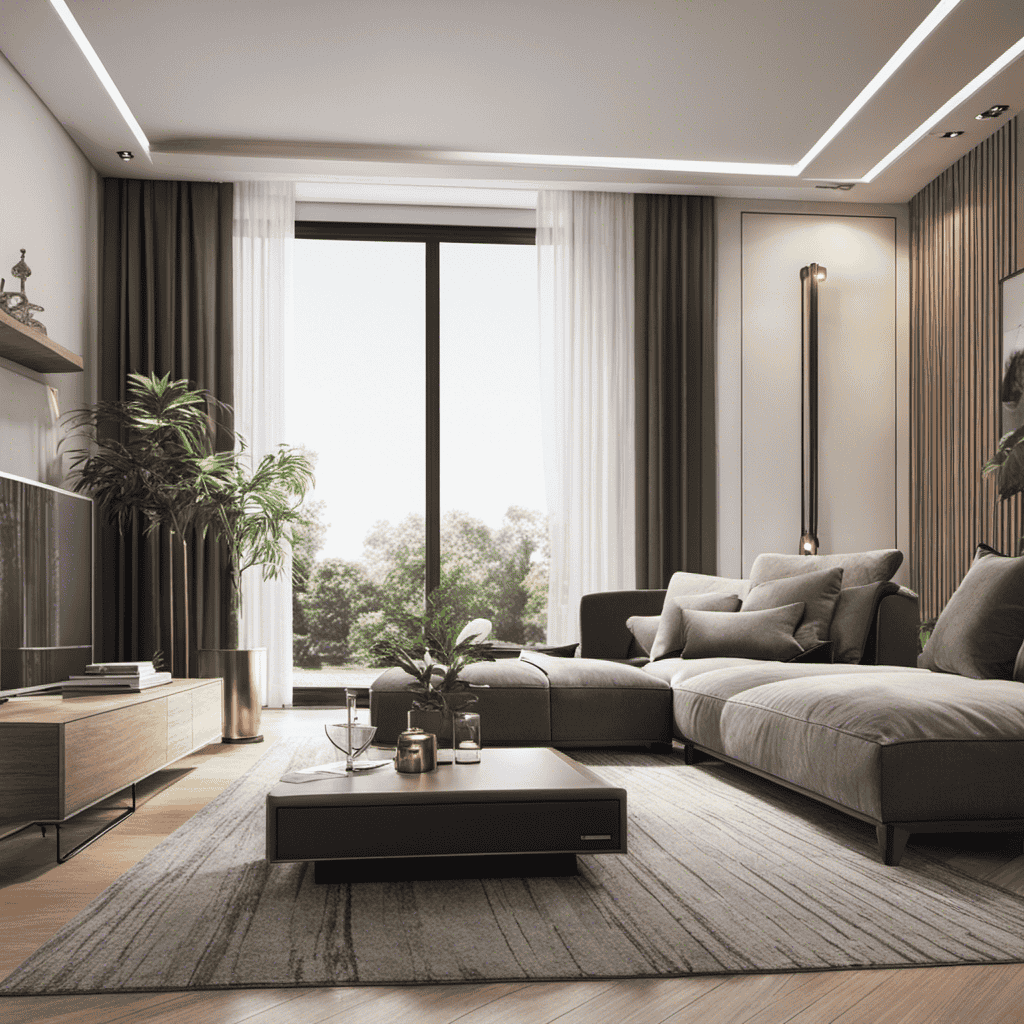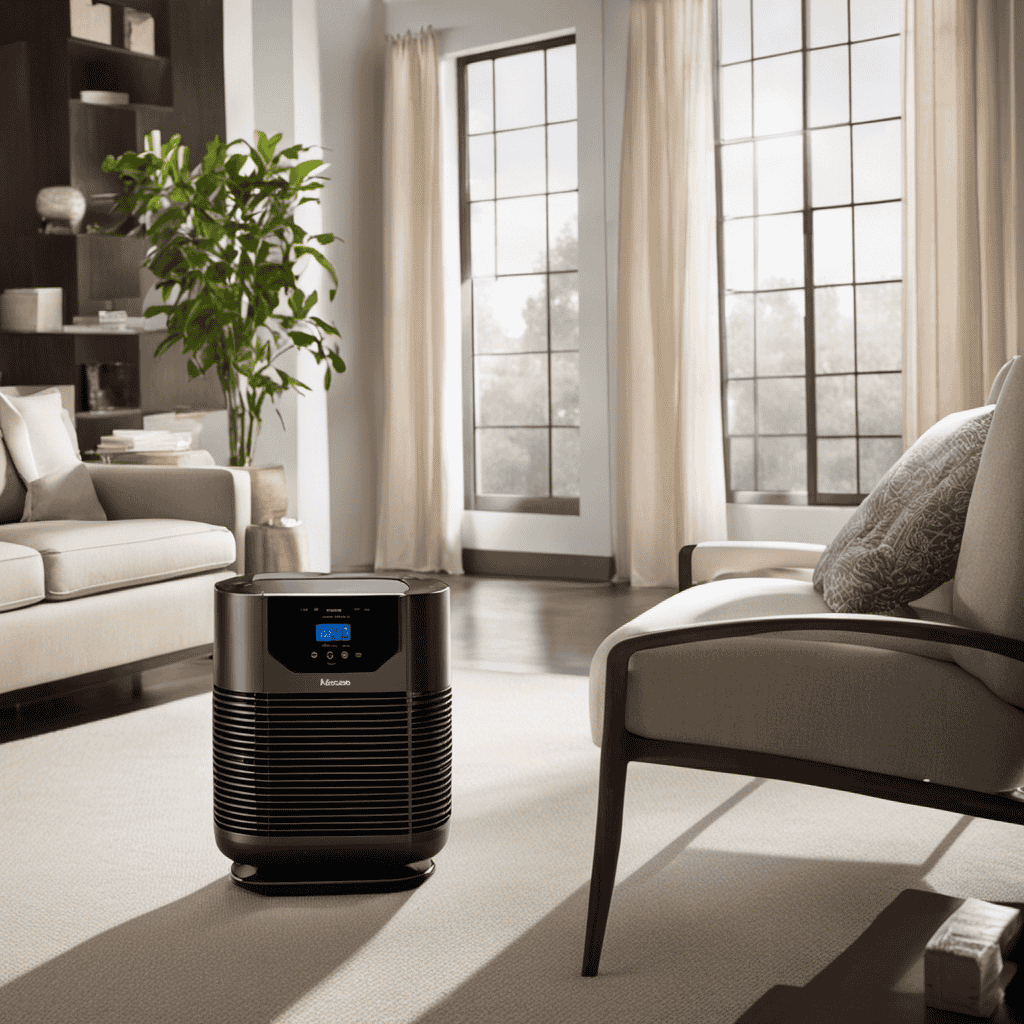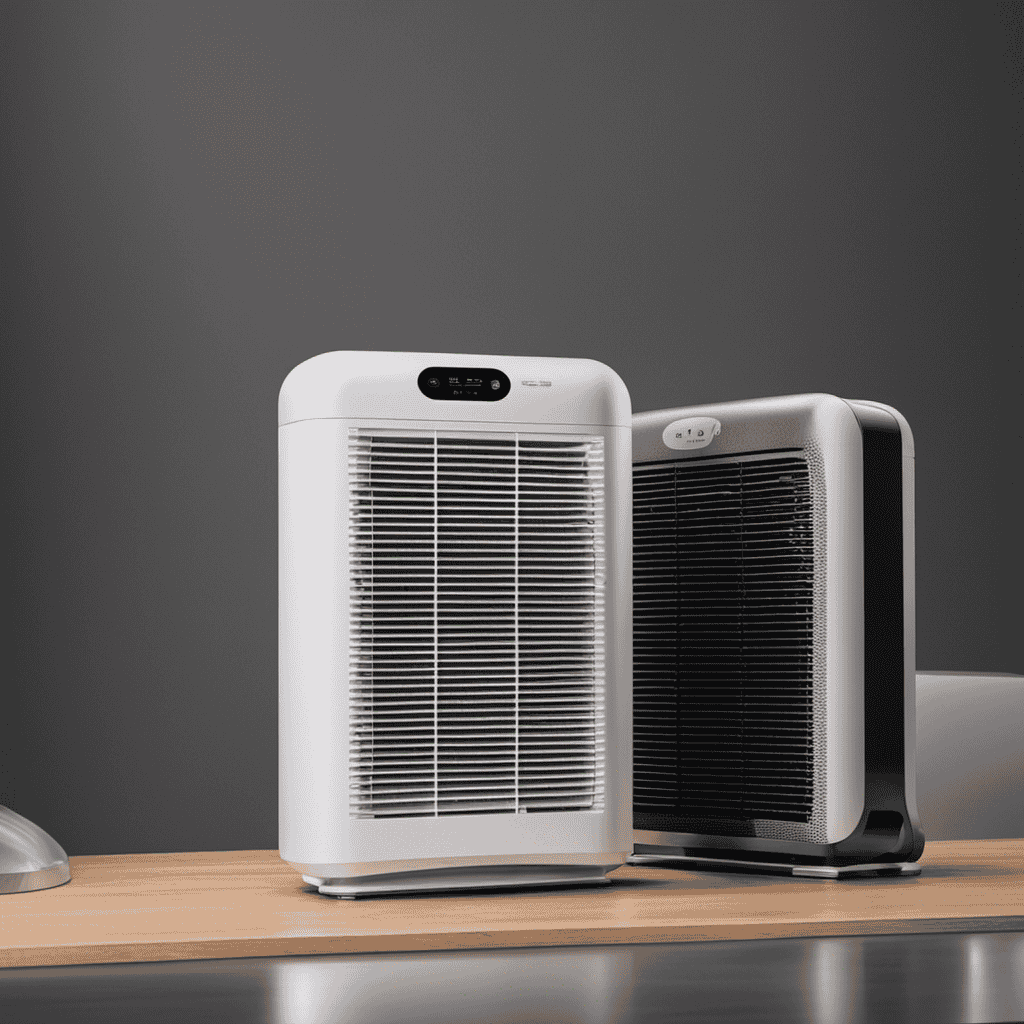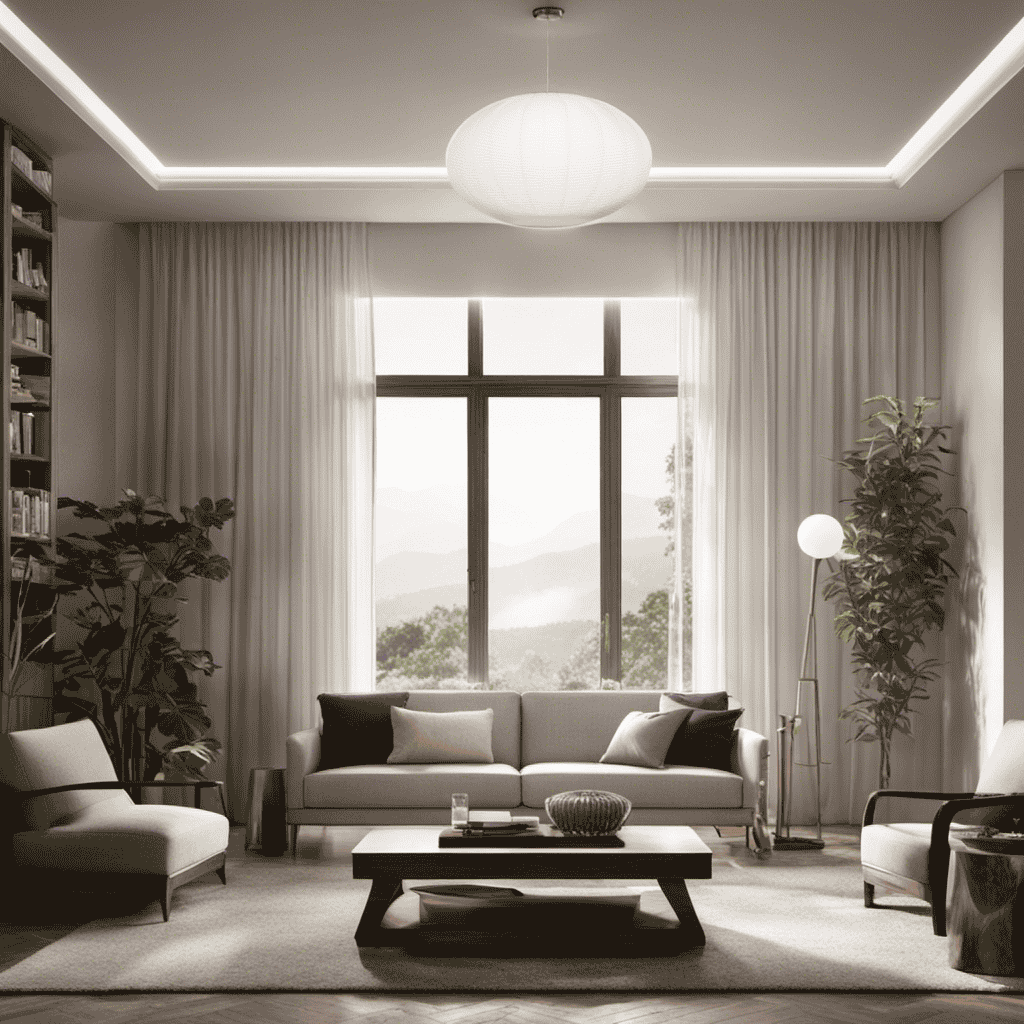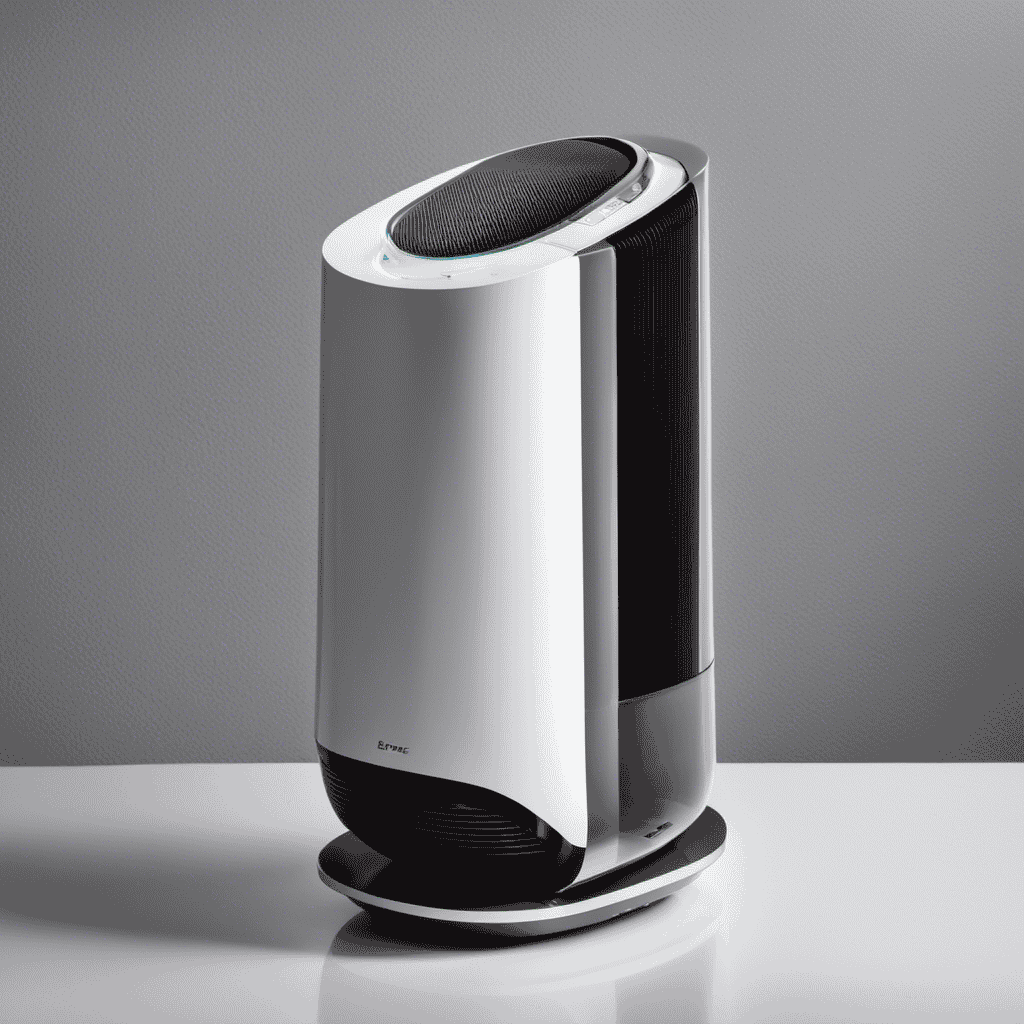I have always been worried about the air quality in the air around me, especially indoors where pollutants can build up. Did you know that indoor air can be up to five times more contaminated than outdoor air? This is why I took action and made my own air purifier.
In this article, I’ll guide you through the process of choosing the right components, assembling your DIY air purifier, understanding air purification techniques, enhancing efficiency, and maintaining and upgrading your homemade device.
Let’s get started!
Key Takeaways
- Consider the type of filter: HEPA, activated carbon, ionizers
- Gather necessary materials: filter and power source
- Explore different methods of removing pollutants from the air
- Regularly clean or replace filters to maintain efficiency
Choosing the Right Air Purifier Components
When choosing the right air purifier components, it’s important to consider factors such as the type of filter and the size of the purifier.
Air filter types play a crucial role in capturing and removing various pollutants from the air. There are three main types of filters commonly used in air purifiers: HEPA filters, activated carbon filters, and ionizers.
HEPA filters are highly efficient at capturing small particles such as dust, pollen, and pet dander. Activated carbon filters excel at removing odors, gases, and volatile organic compounds (VOCs). Ionizers use electrical charges to attract and eliminate airborne particles.
Another important component to consider is the fan options. The fan helps to circulate and draw air through the purifier, increasing its efficiency. It’s essential to choose a purifier with a fan that matches the size of the room to ensure optimal air purification.
Assembling Your DIY Air Purifier
To start assembling your DIY air purifier, you’ll first need to gather all the necessary materials. The key components for your air purifier are the filter and the power source. When it comes to filter selection, it’s important to consider the type of pollutants you want to remove from the air. HEPA filters are highly effective at capturing small particles like dust, pollen, and pet dander. For odor removal, activated carbon filters are the best choice as they can trap and eliminate unpleasant smells. As for the power source, you can use either a plug-in adapter or a rechargeable battery. The table below summarizes the different filter options and power sources available for your DIY air purifier.
| Filter Type | Pollutants Removed |
|---|---|
| HEPA | Dust, pollen, pet dander |
| Activated Carbon | Odors, VOCs |
| Power Source | Pros | Cons |
|---|---|---|
| Plug-in Adapter | Continuous power supply | Limited mobility |
| Rechargeable | Portable, no need for cord | Limited battery life |
Understanding the different options for filter selection and power sources is crucial in building an effective DIY air purifier. Now, let’s delve into the next section and explore the various air purification techniques.
Understanding Air Purification Techniques
You can gain a better understanding of air purification techniques by exploring different methods of removing pollutants from the air. Air purifiers play a crucial role in maintaining clean and healthy indoor air. To effectively maintain an air purifier, regular maintenance is essential. This includes cleaning or replacing filters, checking the airflow, and ensuring that the unit is functioning properly. By following these maintenance practices, you can ensure that your air purifier is working at its optimal capacity.
When it comes to removing common air pollutants, air purifiers utilize various techniques. One method is through mechanical filtration, where air passes through a filter that traps particles like dust, pollen, and pet dander. Another technique is activated carbon filtration, which absorbs gases and odors. Additionally, some air purifiers use electrostatic precipitation to charge particles and remove them through an electric field.
Understanding these different techniques can help you choose the best air purifier for your specific needs and effectively remove pollutants from your indoor air.
Enhancing Air Purification Efficiency
One way to improve the efficiency of an air purifier is by regularly cleaning or replacing the filters. Filters play a crucial role in capturing and removing pollutants from the air. However, over time, they can become clogged and less effective at trapping particles. By cleaning or replacing the filters, you can ensure that your air purifier maintains its maximum filtration capacity.
Additionally, optimizing air circulation within the room can also enhance the efficiency of the purifier. Here are three ways to do this:
-
Keep doors and windows closed to prevent outdoor pollutants from entering the room.
-
Use fans or air vents to improve air circulation and distribute purified air evenly.
-
Position the air purifier in a central location to ensure that it can effectively circulate and filter the air in the room.
Maintaining and Upgrading Your Homemade Air Purifier
Regularly cleaning or replacing the filters in your homemade air purifier can help maintain its efficiency. However, to further upgrade the filter and troubleshoot any issues, consider the following options:
| Filter Type | Efficiency | Lifespan | Cost |
|---|---|---|---|
| HEPA | 99.97% | 6-12 months | High |
| Activated Carbon | 85-90% | 3-6 months | Medium |
| Ionizer | 80-85% | N/A | Low |
Upgrading to a HEPA filter can significantly improve air purification by capturing particles as small as 0.3 microns. However, it comes at a higher cost and needs replacement every 6-12 months. Activated carbon filters are effective against odors and gases, but their efficiency decreases over time. Ionizers, while low-cost, may not be as efficient and may produce ozone as a byproduct. Troubleshooting issues can include checking for clogged filters, proper fan functioning, and ensuring a suitable fan-to-filter ratio. Regular maintenance and filter upgrades will ensure your homemade air purifier continues to provide clean and healthy air.
Frequently Asked Questions
How Does an Air Purifier Work?
Air purifiers use different types of filters to remove common contaminants from the air, such as dust, pollen, and pet dander. These filters trap particles, improving indoor air quality and reducing allergy symptoms.
What Are the Benefits of Using an Air Purifier?
Using an air purifier has numerous benefits, such as reducing indoor pollutants, improving air quality, and alleviating allergies. It’s a wise investment that brings peace of mind and healthier living.
Can an Air Purifier Help With Allergies?
Yes, an air purifier can help with allergies by effectively removing allergens like pollen, dust mites, and pet dander from the air. It provides relief by creating a cleaner and healthier indoor environment.
Are There Any Safety Precautions to Consider When Using an Air Purifier?
Before using an air purifier, it’s crucial to consider safety precautions. Look for devices with features like HEPA filters and ozone-free technology to effectively reduce indoor air pollution without harmful side effects. Remember, prevention is better than cure.
How Often Should I Clean or Replace the Filters in My Air Purifier?
I clean or replace the filters in my air purifier every 3-6 months, depending on the manufacturer’s recommendations. This helps maintain optimal performance and ensures that the purifier continues to effectively remove pollutants from the air.
Conclusion
In conclusion, crafting your own air purifier is a practical and cost-effective solution to improve indoor air quality. By selecting the right components and understanding air purification techniques, you can create a device that efficiently filters out pollutants and allergens.
Regular maintenance and necessary upgrades will ensure optimal performance. So, why settle for subpar air quality when you have the power to create a cleaner environment? Take control of your air purification needs and enjoy the benefits of a homemade air purifier today.
